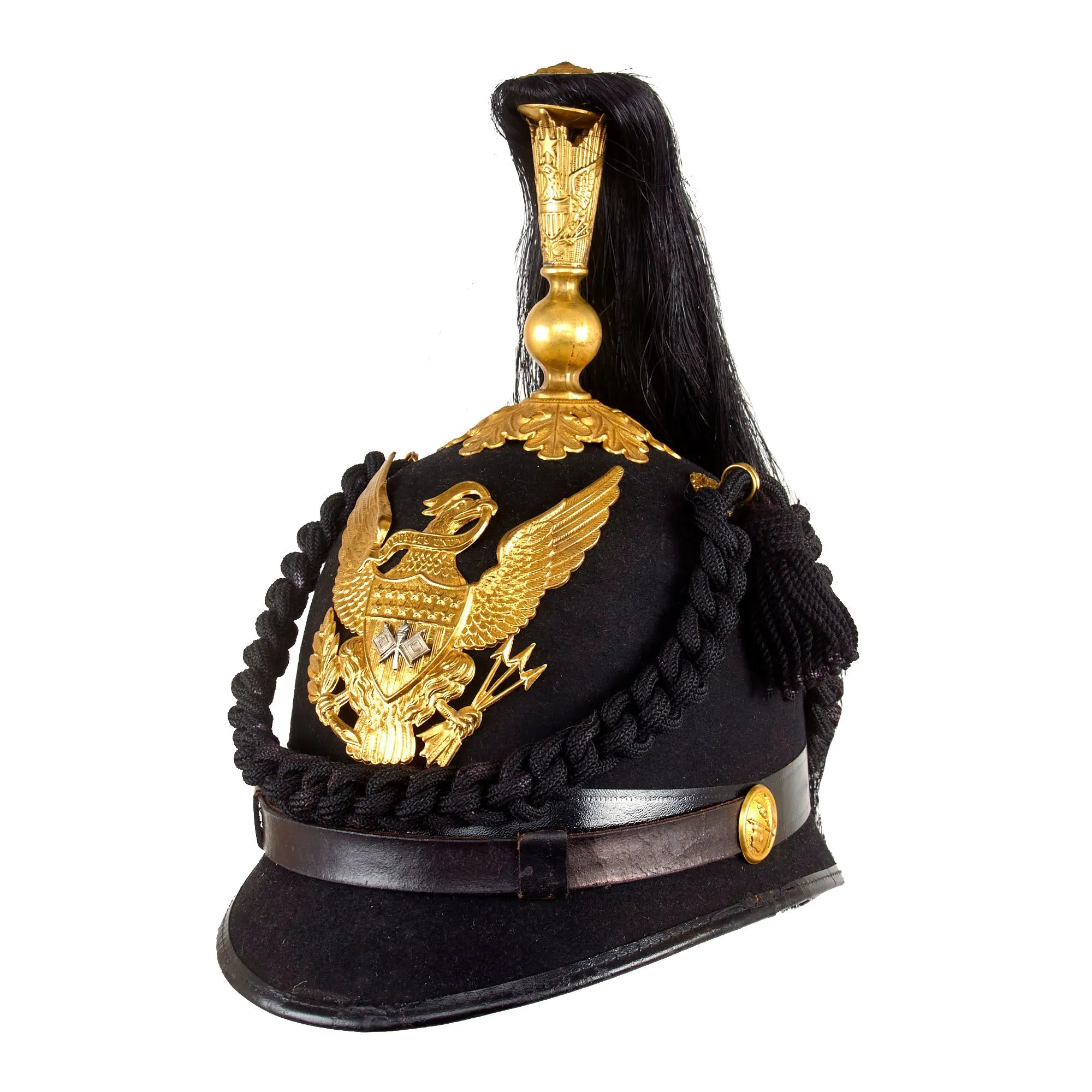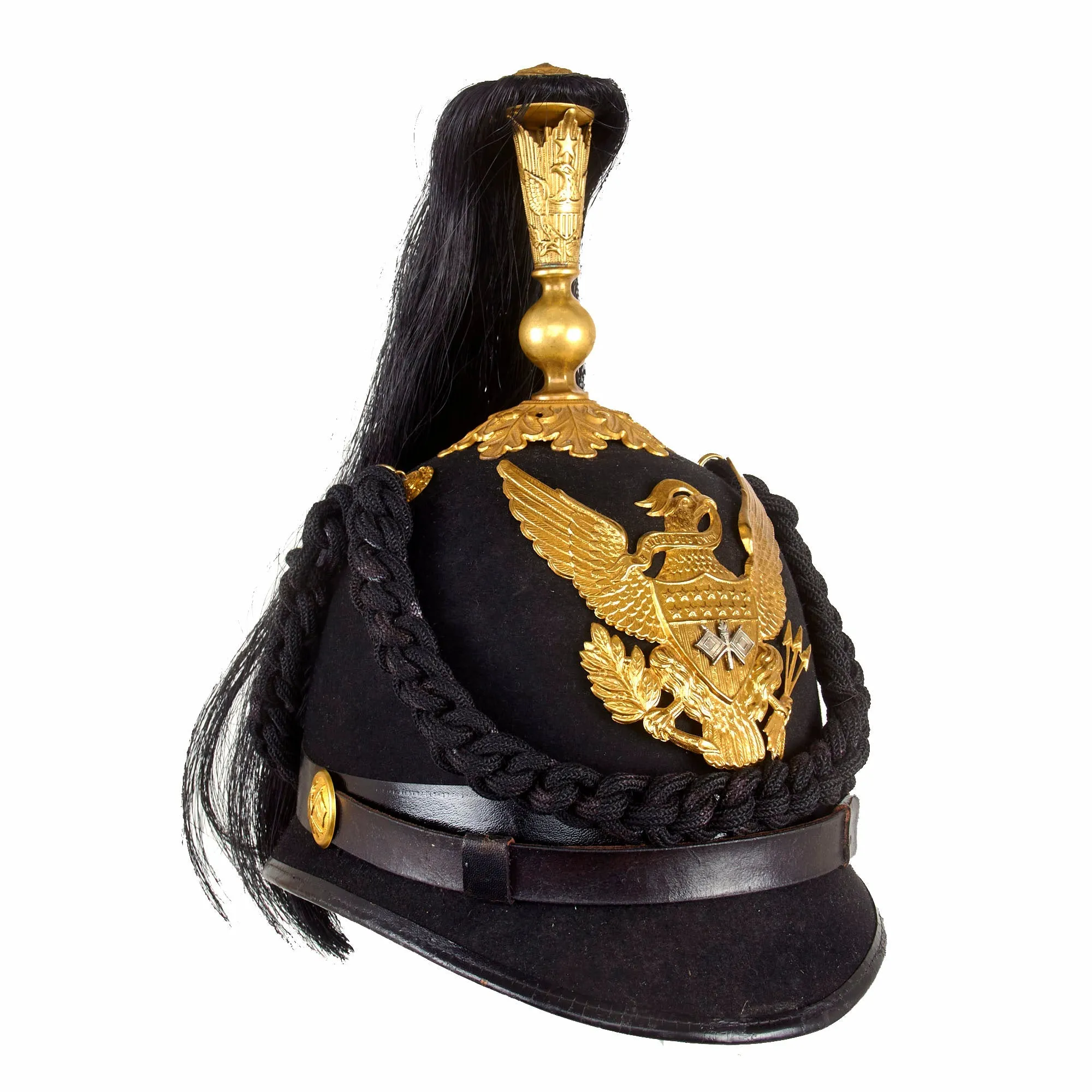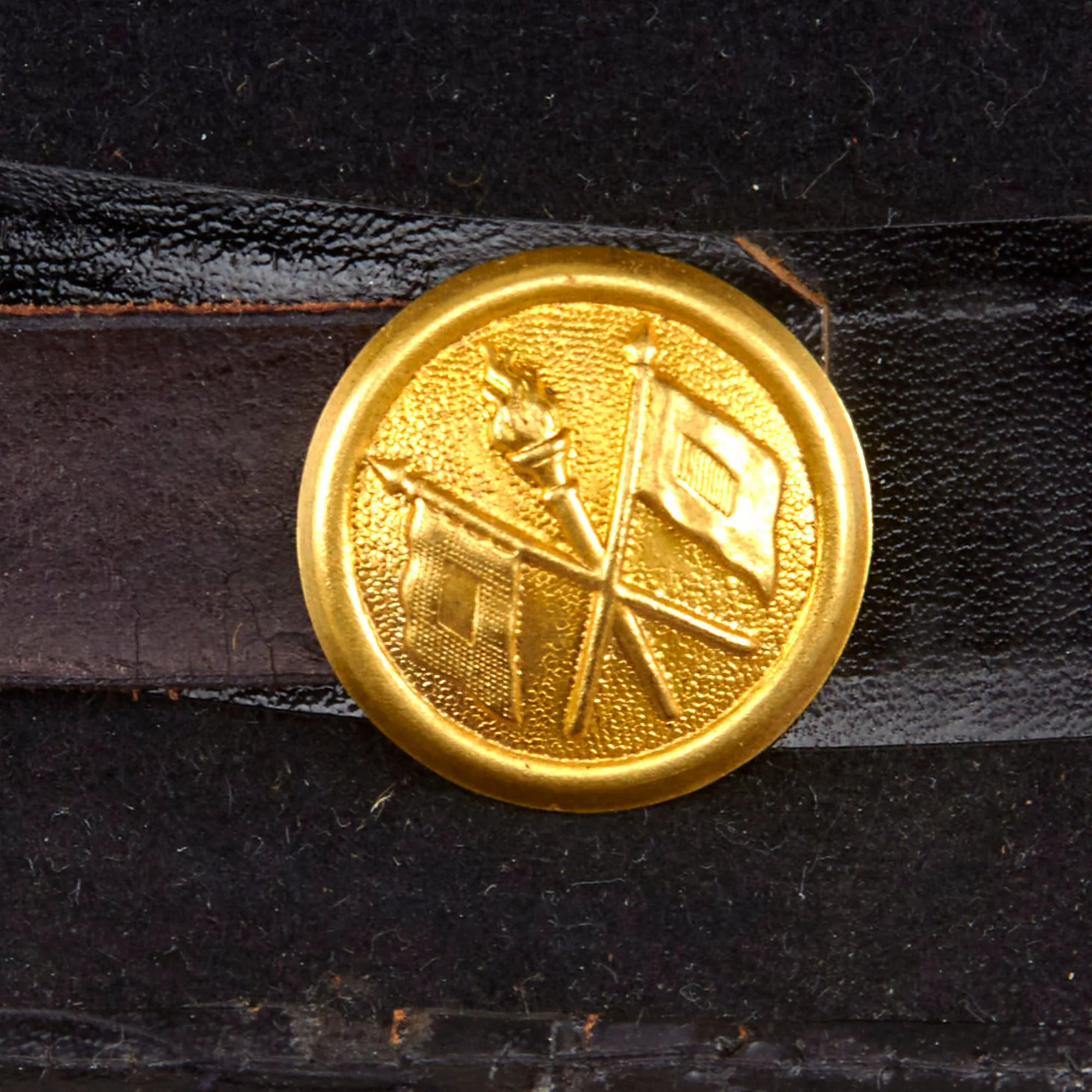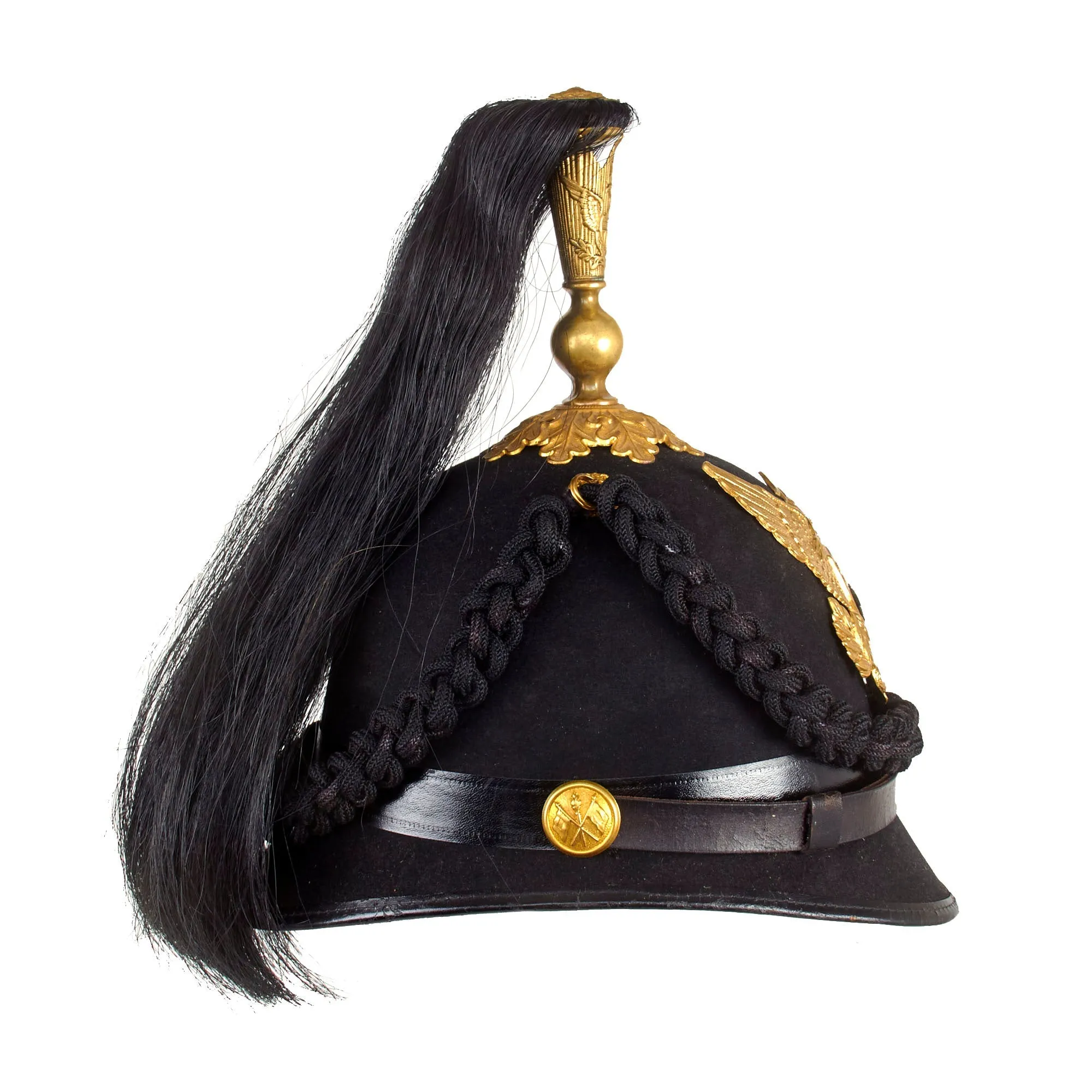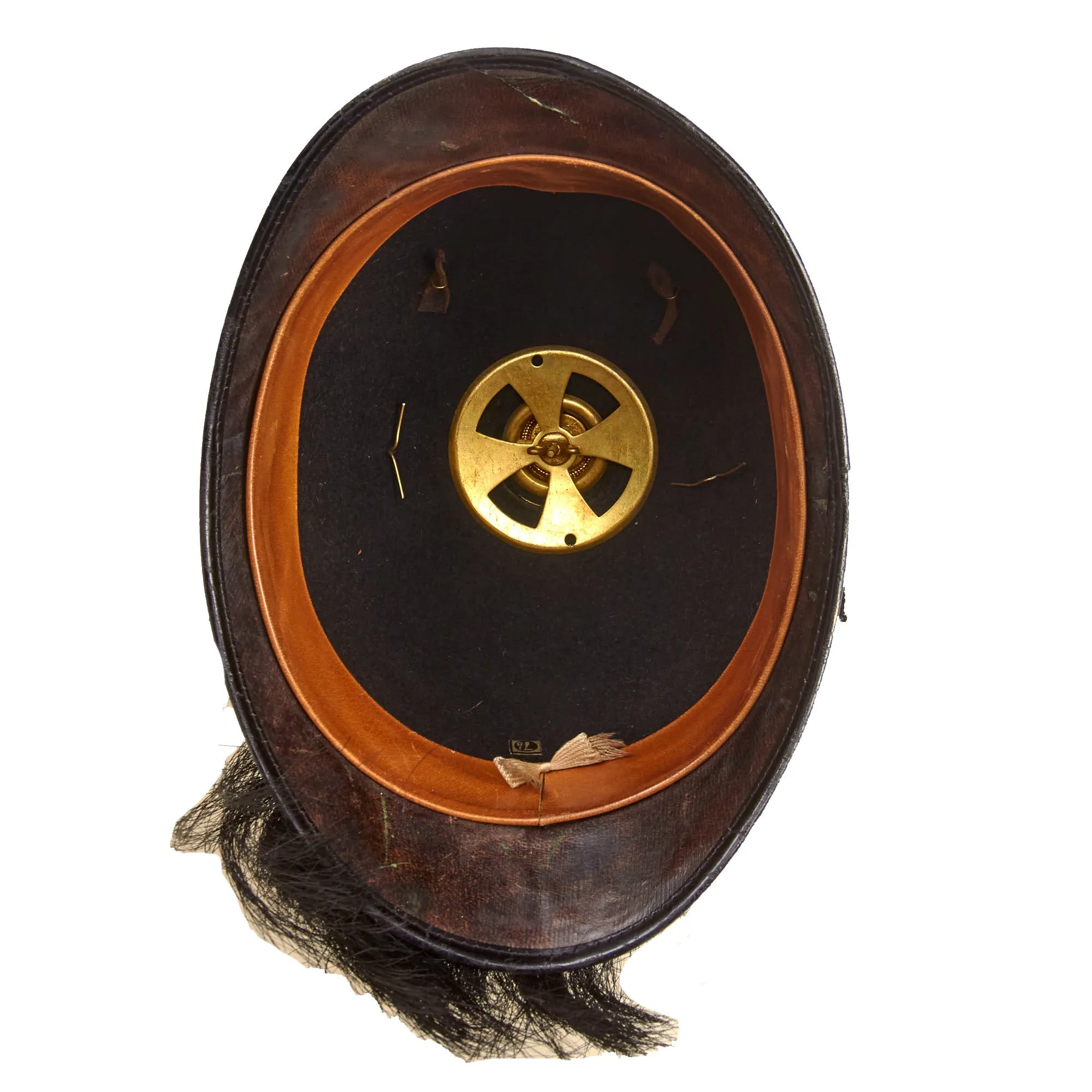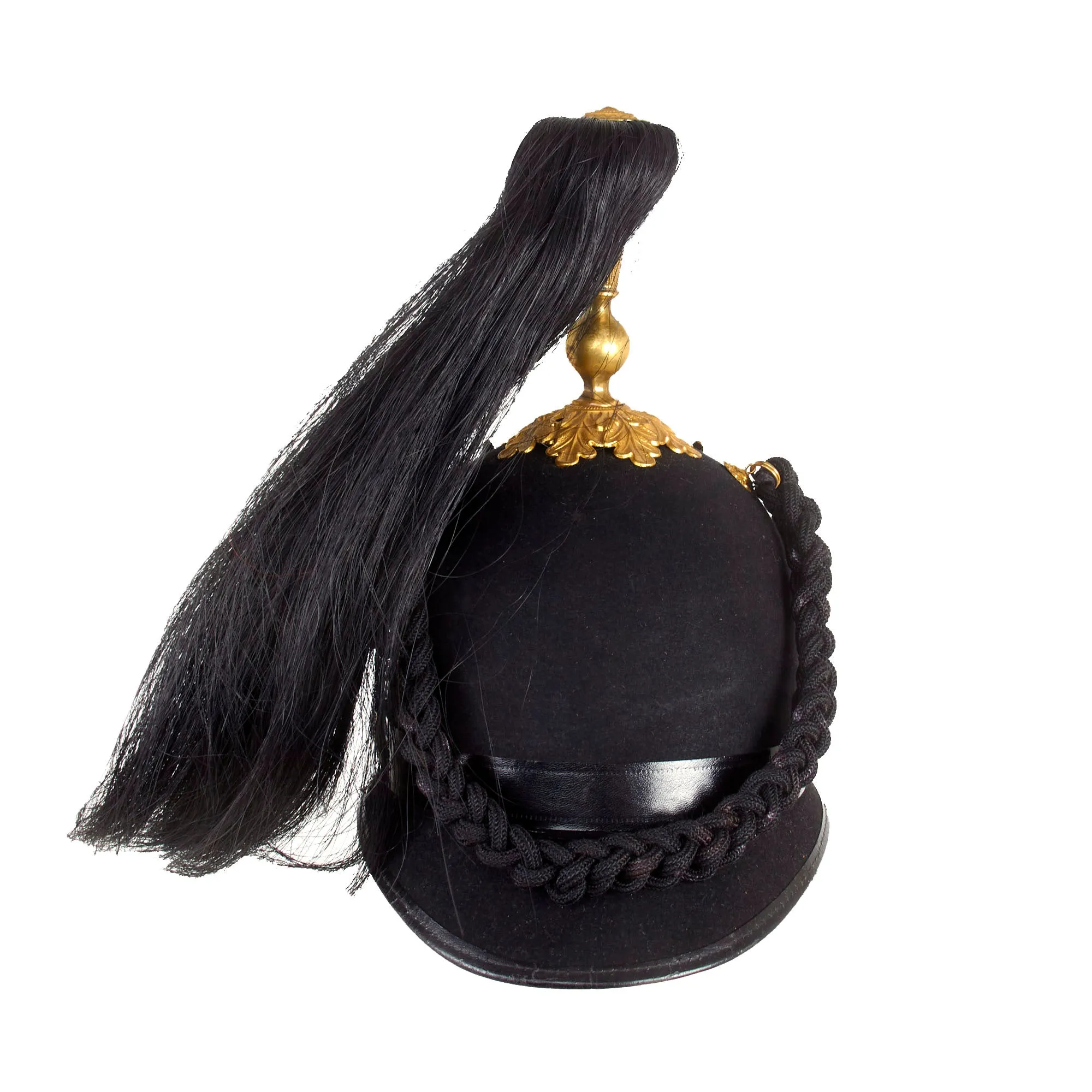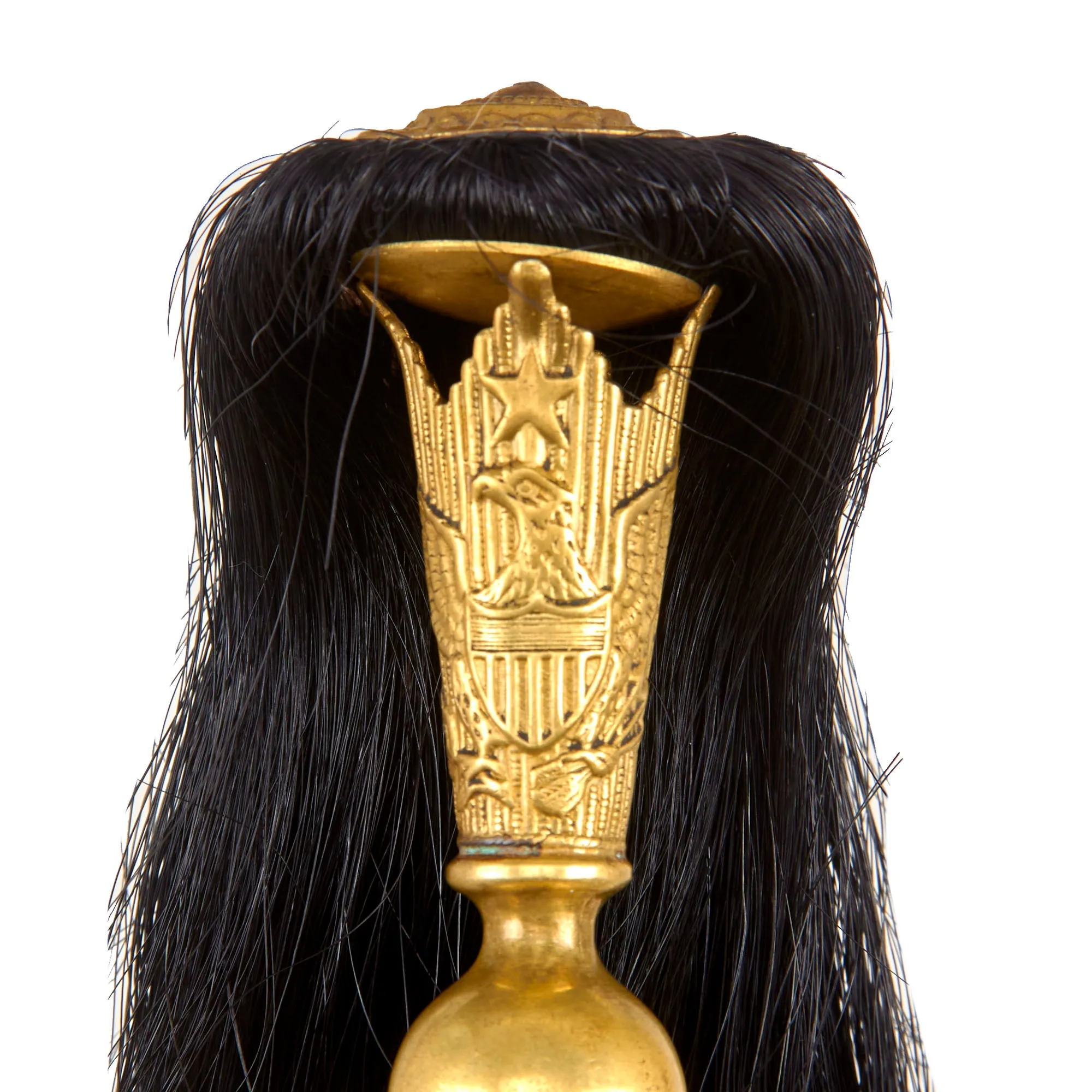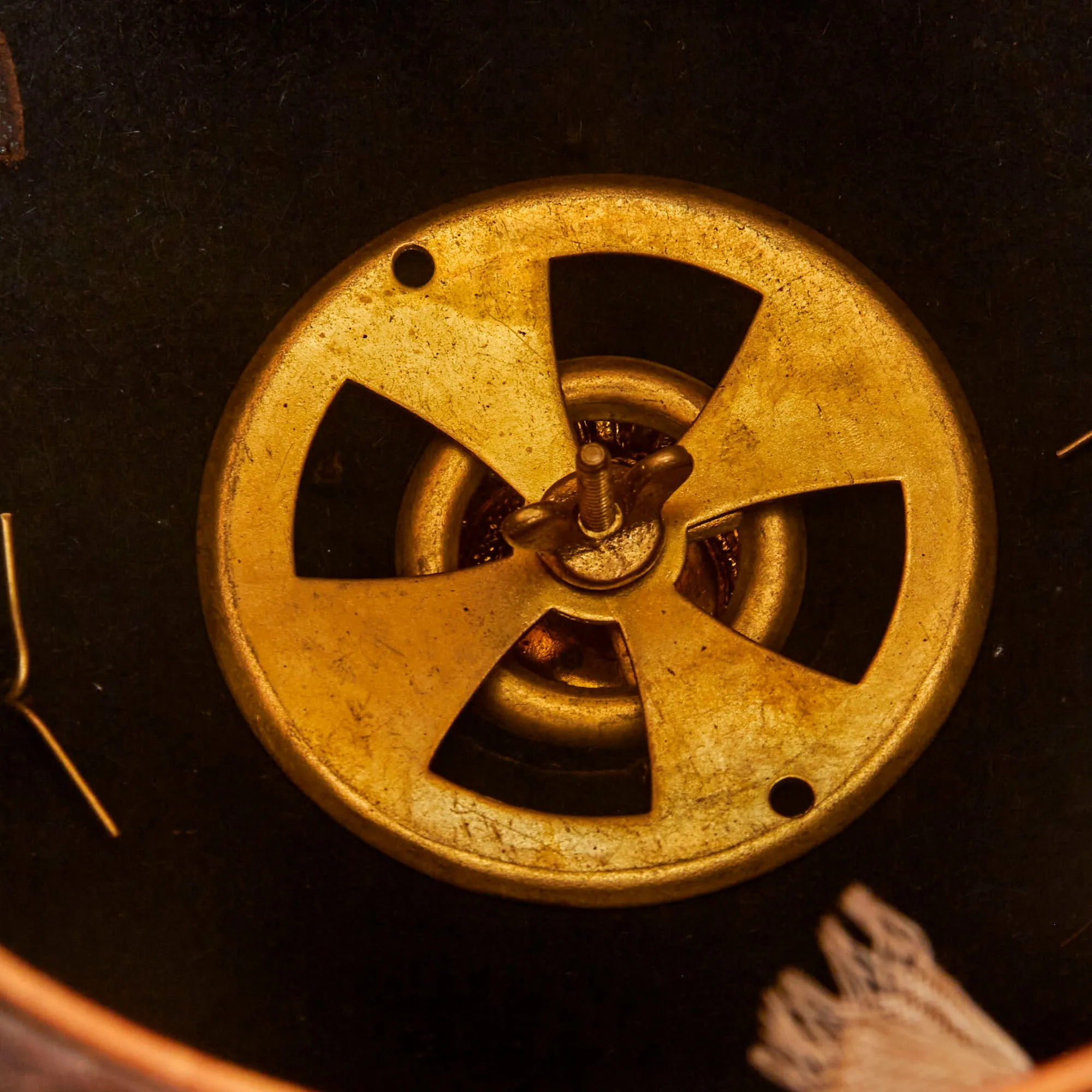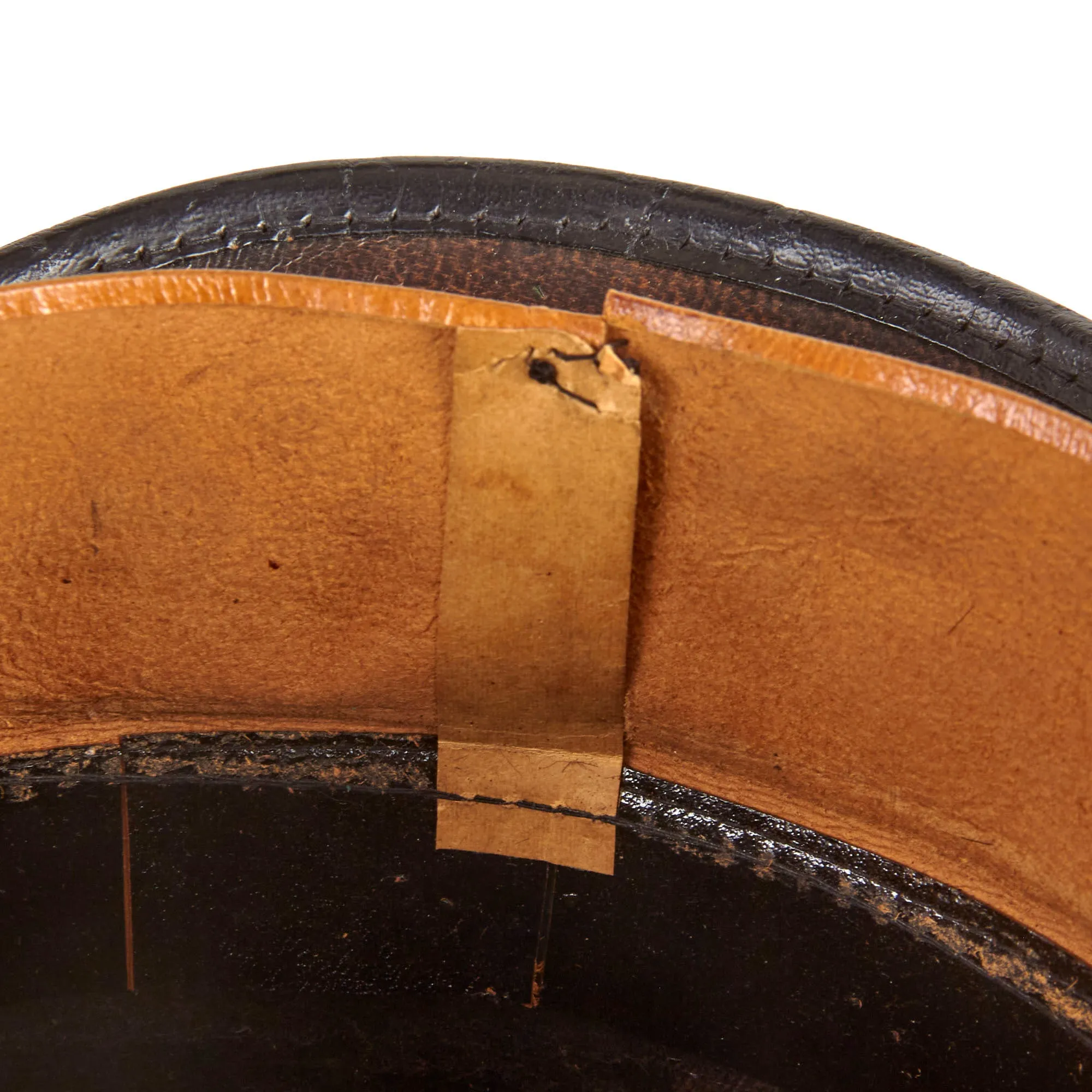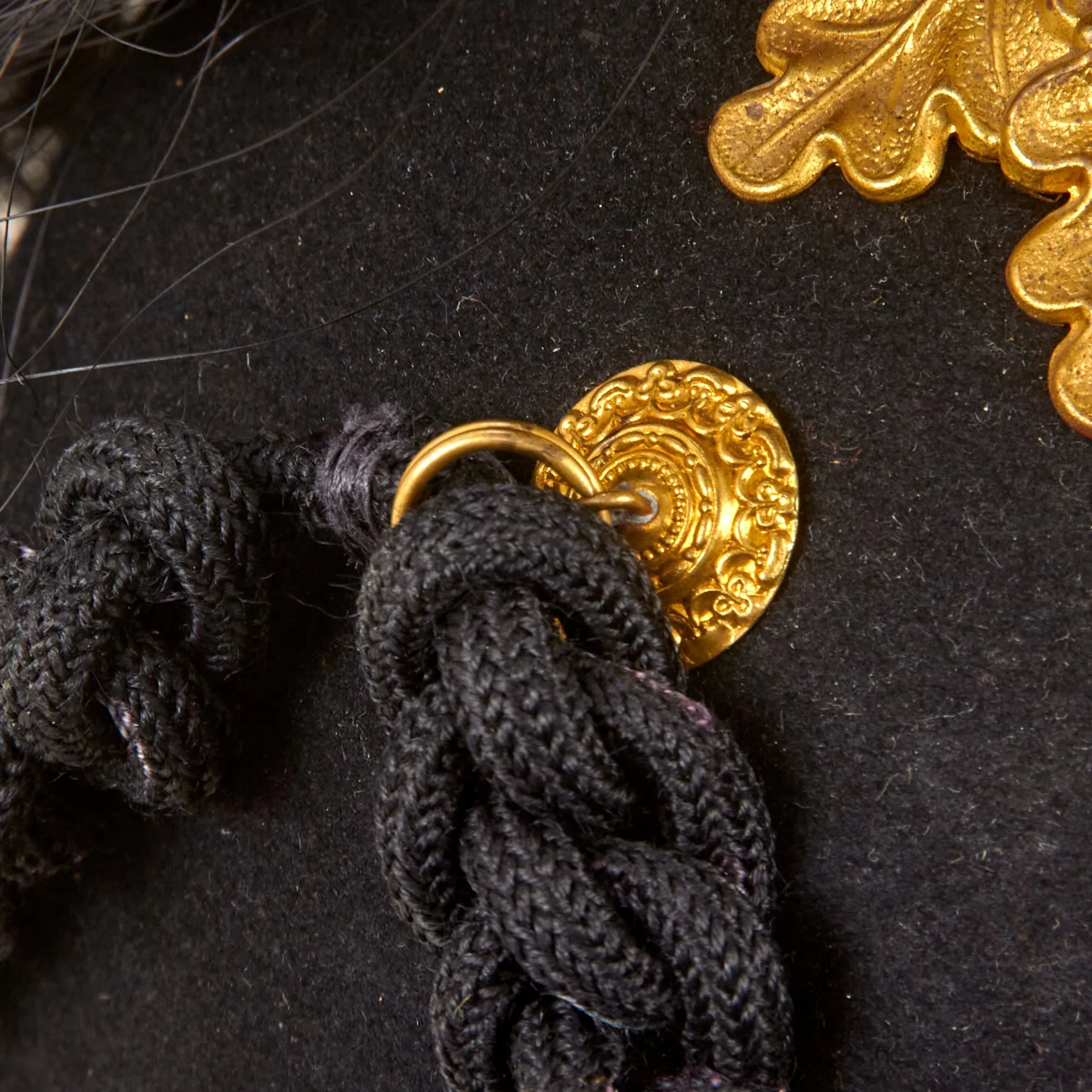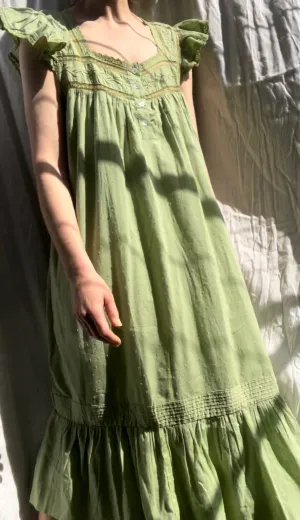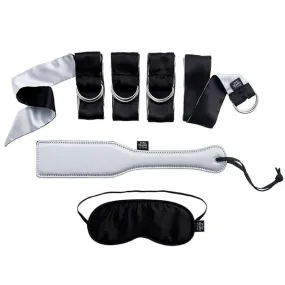Original Item: One Only. Much like our European cousins in the 1880s, the U.S. Army started to adopt spiked pith helmets, often in white, with all brass mounts and occasionally plumes. These saw active service in the Spanish American War of 1898 especially in the tropical climate in Cuba. While often referred to as "pith helmets" in the broad sense, it was made from cork, like many European variants, such as the Wolseley pattern used by the British.
This helmet dates to the late 1880s to early 1890s, and it really is quite striking. This is not the type of helmet that was worn in the field, but instead one intended for use with the "dress" uniform for ceremonial occasions. It is beautifully made from cork covered with brown fabric but missing a legible maker’s label.
The Helmet plate displays the Great Seal of the United States, with the American Eagle with a banner in its beak stating: E PLURIBUS UNUM. The "crossed flags" on the shield indicate that it is for an Army Signal Corps unit. The Signal Corps branch insignia is represented by two signal flags crossed, dexter flag white with a red center, the sinister flag red with a white center, staffs gold, with a flaming torch of gold color metal upright at center of crossed flags. "Crossed flags" have been used by the Signal Corps since 1868, when they were prescribed for wear on the uniform coat by enlisted men of the Signal Corps. In 1884, a burning torch was added to the insignia and the present design adopted on 1 July 1884 like the insignia present on the plate. The flags and torch are symbolic of signaling or communication.
From the looks of the front plate, it is the original plate to the helmet and was not switched like ones we have seen in the past. The crossed flags side buttons are still present.
Very nice, great condition for age with loads of patina, ready to display!




